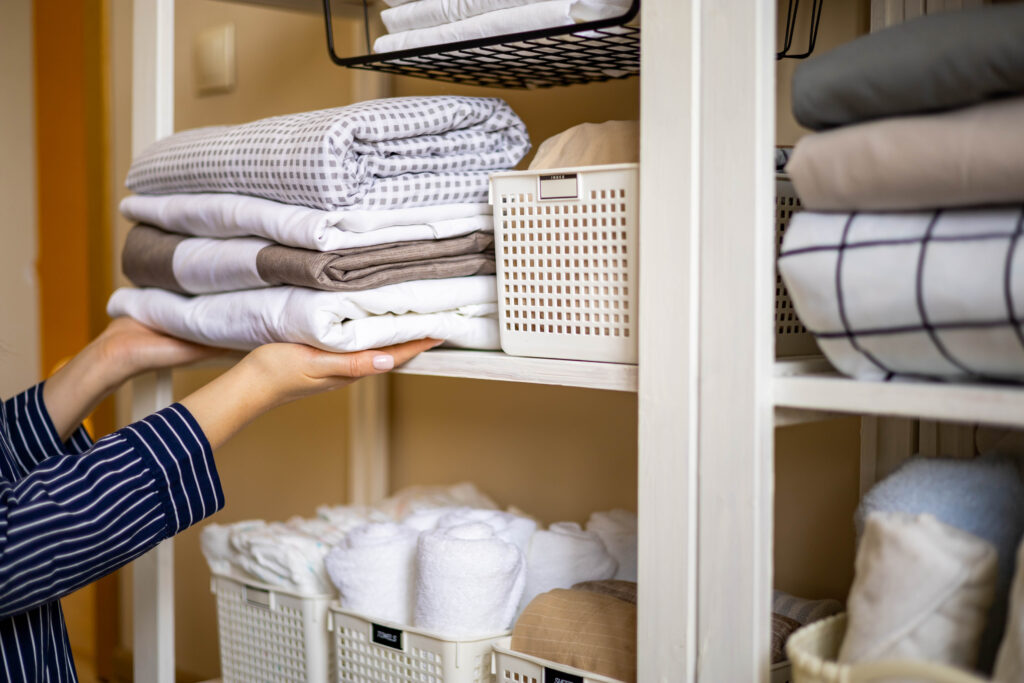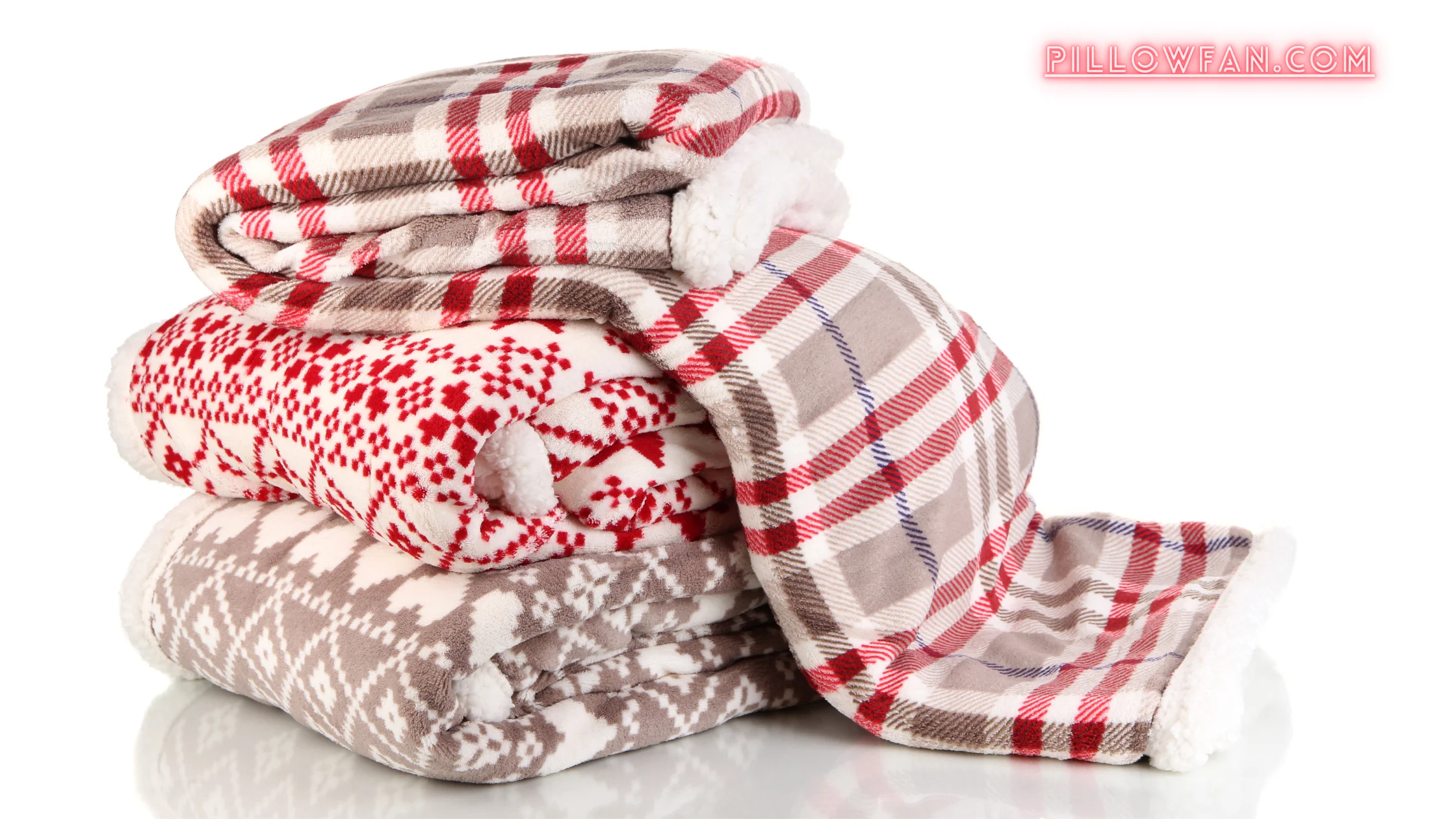Introduction:
Blanket storage is the organized and orderly method of storing blankets while not in use. It involves using a variety of storage techniques and approaches that are particularly meant to keep blankets neat, clean and easily accessible. The major purpose of blanket storage is to keep these comforting things in good condition while preventing clutter.
Table of Contents
This storage ensures that these critical goods remain neatly kept away ready to give warmth and comfort whenever needed by employing various containers, furniture pieces or designated locations. Effective blanket storage not only helps to a more ordered living environment but it also plays an important role in protecting the durability and appeal of blankets in the home.
What is Blanket Storage?
Blanket storage is the process of arranging and storing blankets when they are not in use. It entails employing various storage methods or containers designed specifically to store blankets properly keeping them clean, tidy and easily accessible. Baskets, boxes, chests and ottomans with storage sections specific blanket racks or shelves are all choices for blanket storage.
The purpose of this storage is to reduce clutter keep blankets clean and keep them easily available when all needed while contributing to the overall beauty of the living area.
Importance of Organized Blanket Storage:
Organized blanket storage holds significant importance in maintaining a tidy and functional living environment. To begin with, having blankets neatly packed away when not in use helps to tidy and create a visually pleasing area. This method of organization reduces the mess and chaos that might result from scattering blankets about the house.
Furthermore, careful storage protects blanket quality and lifespan. Keeping them folded or rolled in specified storage containers or areas reduces the possibility of dust, dirt or accidental spills damaging them.
This is especially important for fragile or antique blankets which require careful care to retain their beauty and integrity. This storage also enables convenient accessibility. As blankets have dedicated storage areas, it is easier to find and collect them as needed.
Advantages of Blanket Storage:
Blanket storage offers several advantages that contribute to a more organized, efficient and aesthetically pleasing living environment:
Space Optimization:
Proper storage of blankets helps maximize space utilization within a home. By having designated storage areas such as baskets, chests or shelves it prevents clutter and frees up space for other items or activities.
Protection and Preservation:
Storing blankets in dedicated spaces or containers protects them from dust, dirt and potential damage. This preservation ensures the longevity and quality of the blankets especially for heirloom or delicate pieces.
Easy Accessibility:
Organized storage allows for easy access to blankets when needed. Instead of rummaging through closets or rooms having a specific storage spot ensures quick retrieval and ideal for spontaneous moments of comfort or during colder seasons.

Aesthetics:
Neatly kept blankets can improve a room’s visual attractiveness. Using blanket storage as decorative components such as hanging them over furniture or ladders or displaying them in attractive containers adds warmth, texture and visual appeal to the interior design.
Reduced Stress and Clutter:
An organized house promotes a more peaceful environment. Having a particular place for blankets reduces clutter resulting in a more calm and appealing environment that adds to relaxation and comfort.
Personalization and customization:
These storage alternatives are available in a variety of forms, fabrics and sizes allowing users to tailor their storage solutions to their tastes and home decor.
Warmth Preservation:
Well-kept blankets keep their warmth and comfort. By keeping them clean and safe, they will always be available to give comfort during colder seasons or whenever they are required.
Environmental Protection:
Proper storage protects blankets from potential damage caused by environmental elements such as sunshine, moisture or pests ensuring that they remain in outstanding condition throughout time.
Types of Blanket Storage:
Blanket Chests or Trunks:
These are traditional and frequently attractive blanket storage receptacles made only for blankets. They are often made of wood or other strong materials and have enough room to store numerous blankets while also serving as furniture.
Baskets or Woven Containers:
Wicker, rattan or woven baskets provide a lovely and adaptable storage option. They are available in a variety of forms and sizes and allow blankets to be neatly folded or rolled and stowed while giving a rustic or bohemian touch to the decor.
Ottomans or Storage Benches:
Multi-functional furniture items with concealed storage compartments such as ottomans or benches give a covert method to keep blankets. They provide a dual role by providing both seats and storage.
Blanket Ladders:
Rugged wooden or metal ladders make a lovely display and storage option. Blankets can be draped over the rungs to provide easy access while also adding decor to the space.
Shelves or Shelving Units:
Wall-mounted or freestanding shelves are ideal for storing folded blankets. These shelves are available in a variety of styles and materials allowing for customization to fit varied aesthetics.
Dedicated Blanket Racks:
Racks made exclusively for hanging blankets whether freestanding or wall-mounted provide an elegant and tidy storage option. They enable blankets to be exhibited while being conveniently available.
Beneath-bed Storage:
Using storage bins particularly made to fit beneath the bed saves room while keeping blankets out of sight yet conveniently accessible.
Storage Bags or Vacuum-Sealed Bags:
These are ideal for long-term storage or seasonal blankets. Vacuum-sealed bags compress blankets to save space and protect them from dust or pests.
Also Read: Thermal blanket
Care and Maintenance:
Taking care of blanket storage involves a few key practices to ensure the longevity and cleanliness of the blankets:
Regular Cleaning:
Follow care instructions for washing machine-friendly blankets using a gentle cycle and mild detergent. Spot-clean minor stains promptly to avoid frequent washing.
Proper Storage:
Store blankets in clean, dry spaces to prevent dust and moisture buildup. Use breathable containers or bags to allow air circulation and prevent musty odors.
Avoid Sunlight and Heat:
Keep blankets away from direct sunlight and heat sources to prevent color fading and fiber damage in your blanket storage basket.
Rotate Usage:
Alternate the use of blankets to distribute wear evenly and maintain their quality.
Repair Damages:
Mend loose threads or minor tears promptly to prevent further damage. Seek professional repair for significant damage.
Conclusion:
In conclusion, proper blanket storage is essential for preserving their quality and lifespan. You can maintain your treasured blankets in perfect shape for years to come by knowing the value of proper storage areas, preparation, folding techniques using appropriate storage containers and using natural insect deterrents.
FAQ’s:
How should I store blankets to prevent them from developing a musty odor?
To prevent musty odors, store blankets in clean and dry spaces with good ventilation. Use blanket storage breathable containers or bags that allow air circulation to avoid trapped moisture.
Can I store blankets in plastic bags for long periods?
It’s generally not recommended to store blankets in plastic bags for extended periods as they can trap moisture and lead to musty smells or mildew. Go for breathable blanket storage options like cotton or linen bags instead.
Is it okay to fold or roll blankets for storage?
Both folding and rolling blankets are suitable methods for storage. Fold them neatly to prevent creases or roll them to save space and minimize wrinkles in your blanket storage.



